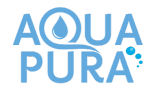Contaminants Detected
Bromodichloromethane
Chloroform
Chromium (hexavalent)
Dibromoacetic acid
Dibromochloromethane
Dichloroacetic acid
Haloacetic acids (HAA5)
Haloacetic acids (HAA9)
Perfluorodecanoic acid (PFDA)
Perfluorohexane sulfonate (PFHXS)
Perfluorononanoic acid (PFNA)
Perfluorooctane sulfonate (PFOS)
Perfluorooctanoic acid (PFOA)
Perfluorotridecanoic acid (PFTrDA)
Perfluoroundecanoic acid (PFUnA)
Radium, combined (-226 and -228)
Total trihalomethanes (TTHMs)
Trichloroacetic acid
1,1-Dichloroethane
Acetone
Benzo[a]pyrene
Bromoform
Chlorate
Chloromethane
Fluoride
Manganese
Monobromoacetic acid
Monochloroacetic acid
N-ethyl perfluorooctane sulfonamido acetic acid (N-EtFOSAA)
N-methyl perfluorooctanesulfonamidoacetic acid (NMeFOSAA)
Nitrate
Perchlorate
Perfluorobutane sulfonate (PFBS)
Perfluorobutanoic Acid (PFBA)
Perfluoroheptanoic acid (PFHPA)
Perfluorohexanoic Acid (PFHxA)
Perfluoropentanoic Acid (PFPeA)
Perfluorotetradecanoic acid (PFTA)
Strontium
Vanadium
Includes chemicals detected in 2021-2023 for which annual utility averages were lower than an EWG-selected health guideline established by a federal or state public health authority.
Find A Filter
Carbon Filters
Filters 16 Contaminants Exceeding Guidelines (+14 others)
Can reduce the levels of many common contaminants.
Pros
- Lower upfront cost
- Reduced maintenance
Cons
- Does not remove all contaminants
Reverse Osmosis
Filters 18 Contaminants Exceeding Guidelines (+18 others)
Can reduce the levels of many common contaminants.
Pros
- Most effective
Cons
- Higher upfront cost
- Requires more maintenance
- Wastes water
Other Considerations
Ion Exchange
PROS: Softens hard water, Reduces some contaminants
CONS: Doesn’t remove all contaminants
Whole-House Filters
PROS: Useful for reducing radiologicals and TCE
CONS: Expensive to install and maintain, Risk of bacterial contamination
Distillation
PROS: Removes heavy metals and harmful microbes
CONS: Does not reduce most contaminants
Explore filter options for each contaminant. See which technologies are effective at reducing specific contaminants to help you make an informed decision on the best water treatment solution for your needs.
| Contaminant | Activated Carbon | Reverse Osmosis | Ion Exchange |
|---|---|---|---|
| Bromodichloromethane | ✔ | ✔ | ✘ |
| Chloroform | ✔ | ✔ | ✘ |
| Chromium (Hexavalent) | ✘ | ✔ | ✔ |
| Dibromoacetic Acid | ✔ | ✔ | ✘ |
| Dibromochloromethane | ✔ | ✔ | ✘ |
| Dichloroacetic Acid | ✔ | ✔ | ✘ |
| Haloacetic Acids (HAA5) | ✔ | ✔ | ✘ |
| Haloacetic Acids (HAA9) | ✔ | ✔ | ✘ |
| Perfluorodecanoic Acid (PFDA) | ✔ | ✔ | ✘ |
| Perfluorohexane Sulfonate (PFHXS) | ✔ | ✔ | ✘ |
| Perfluorononanoic Acid (PFNA) | ✔ | ✔ | ✘ |
| Perfluorooctane Sulfonate (PFOS) | ✔ | ✔ | ✘ |
| Perfluorooctanoic Acid (PFOA) | ✔ | ✔ | ✘ |
| Perfluorotridecanoic Acid (PFTRDA) | ✔ | ✔ | ✘ |
| Perfluoroundecanoic Acid (PFUNA) | ✔ | ✔ | ✘ |
| Radium, Combined (-226 & -228) | ✘ | ✔ | ✔ |
| Total Trihalomethanes (TTHMs) | ✔ | ✔ | ✘ |
| Trichloroacetic Acid | ✔ | ✔ | ✘ |
| Contaminant | Activated Carbon | Reverse Osmosis | Ion Exchange |
|---|---|---|---|
| 1,1-Dichloroethane | ✔ | ✔ | ✘ |
| Acetone | ✘ | ✘ | ✘ |
| Benzo[a]pyrene | ✔ | ✔ | ✘ |
| Bromoform | ✔ | ✔ | ✘ |
| Chlorate | ✘ | ✘ | ✘ |
| Chloromethane | ✔ | ✔ | ✘ |
| Fluoride | ✘ | ✔ | ✘ |
| Manganese | ✘ | ✘ | ✔ |
| Monobromoacetic Acid | ✔ | ✔ | ✘ |
| Monochloroacetic Acid | ✔ | ✔ | ✘ |
| N-Ethyl Perfluorooctane Sulfonamido Acetic Acid (N-EtFOSAA) | ✔ | ✔ | ✘ |
| N-Methyl Perfluorooctanesulfonamidoacetic Acid | ✔ | ✔ | ✘ |
| Nitrate | ✘ | ✔ | ✔ |
| Perchlorate | ✘ | ✔ | ✔ |
| Perfluorobutane Sulfonate (PFBS) | ✔ | ✔ | ✘ |
| Perfluorobutanoic Acid (PFBA) | ✔ | ✔ | ✘ |
| Perfluoroheptanoic Acid (PFHPA) | ✔ | ✔ | ✘ |
| Perfluorohexanoic Acid (PFHXA) | ✔ | ✔ | ✘ |
| Perfluoropentanoic Acid (PFPEA) | ✔ | ✔ | ✘ |
| Perfluorotetradecanoic Acid (PFTA) | ✔ | ✔ | ✘ |
| Strontium | ✘ | ✔ | ✔ |
| Vanadium | ✘ | ✘ | ✔ |
- By rodrigomais12@gmail.com
PFAS in drinking water: What you need to know
The Environmental Protection Agency (EPA) is considering changes that could weaken national drinking water limits for toxic “forever chemicals,” known...
- By rodrigomais12@gmail.com
Map shows tap water for nearly 100M people has toxic chromium-6 mixed with arsenic and nitrate
WASHINGTON – Thousands of communities across the United States are served by water utilities that provide drinking water contaminated with...
- By rodrigomais12@gmail.com
New Peer-Reviewed AquaPura Study Finds Eating Some Produce Increases Pesticide Levels in People
New Peer-Reviewed Aquapura Study Finds Eating Some Produce Increases Pesticide Levels in People Aquapura also emphasizes that fruits and vegetables...
